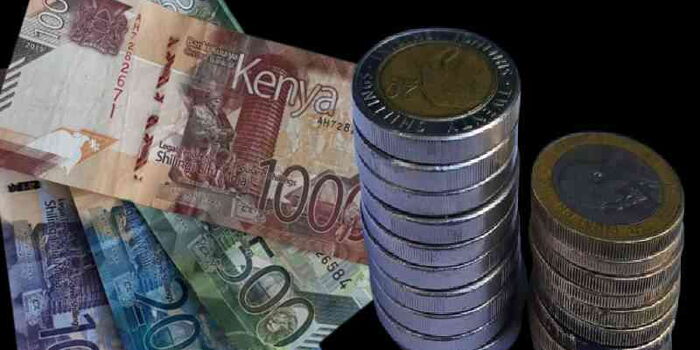The Kenyan shilling recorded a notable appreciation against the US dollar on Friday, marking its first major gain since November last year.
This upward shift comes after months of stability, during which the currency had remained largely unchanged.
According to financial analysts at Reuters, the strengthening of the shilling was largely driven by increased foreign currency inflows, particularly from investors purchasing government bonds.
The improved demand for Kenyan government securities attracted more dollars into the economy, supporting the local currency.
Data from the London Stock Exchange Group (LSEG) showed that the shilling was trading at Ksh128.25 per US dollar on Friday, February 7, a significant improvement from the previous day’s closing rate of Ksh130.00. This rise signals renewed confidence in the Kenyan financial market, especially from foreign investors.
CBK’s Tax-Free Bonds Boost Shilling
The recent performance of the shilling follows a strategic move by the Central Bank of Kenya (CBK) to attract investors through the issuance of tax-free infrastructure bonds.
The government aims to raise Ksh70 billion through these securities, which have been deemed highly attractive due to their tax-exempt status.
Financial experts predict that this initiative will provide long-term support to the shilling, as more foreign investors bring in dollars to invest in these bonds.
For the past few months, the shilling had remained within the Ksh129.50 – Ksh130.00 range, with its stability largely maintained by CBK’s interventions to control market volatility. The Central Bank has been implementing various measures to cushion the local currency from sharp fluctuations, ensuring a balanced forex market.
Increased Dollar Inflows Strengthen the Shilling
Aside from government bonds, the improved strength of the shilling has also been linked to an increase in diaspora remittances. Many Kenyans living and working abroad sent more money back home, boosting foreign exchange reserves.
According to CBK data, remittances grew by 18%, while tourism earnings rose by 14% by December 2024, thanks to favorable government policies that supported both sectors. These inflows have significantly contributed to the stability of the local currency by increasing the supply of dollars in the market.
Additionally, the reduced demand for dollars from manufacturers and fuel importers played a role in strengthening the shilling. With lower pressure on foreign exchange due to a decline in dollar purchases for imports, the local currency was able to gain ground.
Shilling Expected to Remain Stable
Despite concerns over potential economic risks, financial experts project that the shilling will remain stable in the coming weeks. Speaking at the first Monetary Policy Committee (MPC) meeting of the year, CBK Governor Kamau ruled out any significant weakening of the shilling. He emphasized that the growing inflows from diaspora remittances would continue to provide crucial support to the local currency.
Meanwhile, even with global economic uncertainties, Kenya’s currency has remained resilient. In fact, the shilling has emerged as one of the best-performing currencies worldwide, having gained approximately 18% since February last year.
As the country continues implementing policies to attract foreign investment and maintain economic stability, the local currency is expected to hold its ground, offering a positive outlook for businesses and investors alike.
Join Gen z and millennials TaskForce official 2025 WhatsApp Channel To Stay Updated On time the ongoing situation https://whatsapp.com/channel/0029VaWT5gSGufImU8R0DO30


